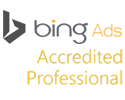
Carrier in Selenium Testing Suite Remains Your Best Choice for Growth
Software Quality Assurance now has become an integral part of every project across various organizations. Many organizations adopt test development approach to make compatible coding with testing modules. Automation testing is now taking the world by storm, and certification in Selenium remains one of the most necessary skills in the Industries.
About Selenium: It is an open-source automated testing tool for testing web applications across several browsers and platforms. The testing that is done by using Selenium tool is referred to as Selenium Testing, and it is comprised of a suite of software. The software caters to a specific need of an organization, and there are four components of Selenium Testing. There are four components in Selenium testing:
- Selenium Integrated Development Environment or IDE
- RC or Selenium Remote Control
- WebDriver
- Selenium Grid
Selenium RC and WebDriver are now merged into a single framework known as Selenium 2, and Selenium 1 is known as Selenium RC. Selenium was created initially by Jason Higgins in 2004, while the engineer was working on a web application that required testing at frequent intervals. The program was initially named as ‘JavaScript Test Runner,’ and it was later renamed as Selenium Core.
- Selenium IDE: It is a tool that is used to edit, record, debug, and replay the functional tests. It is implemented as an extension to the Chrome browser as well as added to the Firefox browser. With this tool, you can record and also export tests to the supported languages like PHP, Java, Ruby, Javascript, etc.
- Selenium RC: It is a test tool that allows writing the automated web application UI tests in any programming language. It acts as an HTTP Proxy, and it intercepts and verifies HTTP messages passed between the browser and the applications that are under test.
- Selenium Webdriver: It is an enhanced version of Selenium RC, and it accepts commands via the client API and further sends it to the browsers. This browser-specific driver can help in accessing as well as launching the different browsers.
- Selenium Grid: It is based on the hub-node architecture, and with Selenium Grid, you will be able to run a parallel test session across various browsers.
Why should you learn Selenium?
Selenium is a more flexible and expandable tool that can provide a test-driven approach. There will be job opportunities available once you learn Selenium and acquire the necessary skills.
The testing automation developers can convert written test cases into suitable automation scripts. It will require adequate knowledge of programming languages like C, C#, Perl, and Java.
Also, with the availability of model-based testing, the testers have excellent business opportunities. Selenium is an extension of Java, and it provides independence to the use of the platform. It is a detector tool for PC browser as well as mobile browser automation and is supported by all crucial browsers like Google Chrome, Mozilla Firefox, etc. Selenium Automation testing is considered as one of the best measurements for automation in the market and is leading in the marketplace.
People interested in Selenium learning can find an excellent place in leading organizations easily, and it has a broader scope for future growth. Selenium can be beneficial for supporting different operating languages like Windows, Linux, and OSX. Excellent courses for learning Selenium are available that can professionally teach the core subject. It can make you learn clearly about Selenium frameworks and web driver scripts.
The future with quality automation test engineers those are having proper qualification credentials can be very high. If an aspirant can learn about artificial intelligence, VR, and other concepts, it will be more advantageous to get success quickly. Moreover, the large community for this open-source automation testing solution makes it easy for the learners to get an answer to the queries immediately. If you are interested in automation testing, you can safely switch your career to a Selenium Automation tester forgetting huge openings and attractive pay.
What are the unique benefits of Selenium testing?
A few key benefits that you can find with the use of a selenium testing tool are as follows:
- It is available open-source: The testing framework of selecting Selenium is open source, and users can easily download it without paying any fees. It can help the enterprises to curtail the testing costs as it is available free. Enterprises can further use this unique web application testing framework by combining it with other commercial tools to have better optimization of the test management.
- It supports multiple operating systems and web browsers: For better user engagement, it is essential for applications to run across several operating systems and web browsers. For this reason, QA professionals always look for a set of tools that can allow them to evaluate the performance of web applications quickly across essential web browsers. Selenium remains the ideal system to support several operating systems like the Linux, Windows, Solaris, and OS X.
- It is a complete IDE for application testing: The Selenium IDE has a set of advanced tools that allow editing, recording, and debugging tests without any extra effort. Apart from being recorded automatically, the test scripts can also be edited manually to optimize the management of trials. It is possible for testing professional to edit the test scripts quickly with the use of auto-completion features.
- Selenium client API for many programming languages: It supports a vast number of programming languages that are used widely like Java, C#, PHP, Perl, Python, and Ruby. It is possible for the QA professional to choose the programming language easily and use the call methods to communicate with Selenium efficiently.
- The support and comprehensive documentation: Since the tool provided by Selenium is excellently documented, the QA professionals can refer to the complete documentation easily and understand the functions correctly.
What career scope you can expect with Selenium skills?
Selenium has now become synonymous for internet application testing, and recent reports reflect that Selenium skills are most sought out for testing automation technology. The technology is expected to have a steep growth curve in the coming future as enterprises want to optimize the feel, look, and performance of web applications.
Selenium makes it easy for functional testing from the development beginning, and it is very convenient for clients to receive ROI faster by optimizing several cycles in it. There is a massive demand for Selenium among automation tools, as most companies are now using web applications. Most of the vendor tool provider support Selenium technology and it is used for automating web application technology.
When clients integrate with Selenium, it helps with web application testing that is done by pulling the APIs. Some areas see a bright future for use in continuous integration, DevOps, shift left testing, and containerizations. Selenium test automation engineers can find exciting opportunities in Mobile testing, API testing, and Big Data. The demand for Selenium tester is high due to the impressive features that make it the best software automation testing tool available.
Selenium Testing Course (SELENIUM - AUTOMATION TESTING)
- Relating Java with other languages
- How to download, install, and configure the Java environment on a Windows system
- Key features of the technology and advantages of using Java
- Java Features
- Write Simple Java Program
- Compile and Run the class files
- Java Programming format
- Java Data Types
- Declarations and Access Control
- Operators and Assignments
- Typecasting
- Arrays
- Introduction to all predefined packages
- Packages in Java
- Access Modifiers
- Introduction
- Class
- Object
- Constructors
- Local, Instance and Static variables
- This keyword
- Final keyword and its use with variables, method and class
- Inheritance and its Types
- Working with super classes and subclasses
- Polymorphism and its types such as overloading, overriding and dynamic binding
- Abstraction and its types
- Encapsulation and getter setter methods
- Abstraction and its types
- Abstract method and Concrete method
- Abstract classes and Interfaces
- String manipulation with String Builder and String Buffer
- String vs String Builder vs String Buffer
- Introduction
- Exceptions categories
- Standard Java Exception and exception handling
- Using Try-catch and finally clause
- I/O using Java to read and write files
- Reading data from Property files using java program
- Reading and Writing data from/to Excel files using Apache POI API
- Introduction to Collections framework
- Java util Package
- List, Set and Map
- Difference of All Collections Interfaces and classes
- What is automation testing?
- What is Selenium?
- What is the use of automation testing?
- What is the difference between Selenium and QTP?
- What we need to Automate?
- Advantages of Selenium
- Selenium IDE
- Selenium RC / Selenium 1.0
- Selenium Web Driver/Selenium 2.0
- Selenium-Grid
- Tools to identify elements/objects
- IE Developer tools
- Google Chrome Developer tools
- Types of locators
- How to create Xpath and CSS
- Preference of locators while automating test script
- Overview of TestNG
- Environment of TestNG
- Writing WebDriver Test Cases using TestNG
- Basic Annotations of TestNG
- Executing Tests
- Executing Test Suites
- Ignore Test
- Dependency Test
- Parameterized Tests
- TestNG XML
- Report Generation
- Why WebDriver?
- Downloading web driver Jars configuring in eclipse
- Architecture of selenium webdriver
- Drivers for Firefox, IE, Chrome etc
- What is the difference between Selenium RC and WD?
- Handel Text box
- Handel HyperLink
- Handel Button and Check box
- Handel Radio Button and DropDown Controls
- Select value from DropDown
- Display all values
- Select values step by step
- Capture screenshots
- Synchronization Commands In Web Driver
- Why Implicit wait and Implementation of Implicit wait
- Why Explicit wait and Implementation of Explicit wait
- Web Driver Fluent wait and Thread Sleep functionality
- File uploads and File downloads (Handling Window based controls using Robot and Sikuli API)
- Handling alerts box and Verfying the Alert Texts
- Handling confirmation messages
- Keyboard actions
- Mouse actions
- Handling Iframes working with Nested Iframes
- Handling multiple tabs
- Handling popups
- Preparing web driver test cases using customized x-path
- Identifying controls using x-path predefined functions
- Web Tables
- What is Web Table
- Extracting data from web tables
- Examples on static and dynamic Web Tables
- Creating Reusable functions for Web Tables
- How to develop Test automation frame work in live environment
- What is a frame work
- Types of frame work
- Data driven frame work
- Modular driven frame work
- Keyword driven frame work
- User Defined Keyword driven framework with implementation
- Execute test scripts from the framework
- Batch Running Test cases using TestNG
- Validations and its usage in Automation test scripts
- Report Generation
- Executing Automation Test Cases in multiple browsers Sequentially
- Working with Chrome and IE browsers
- What is WebDriver Desired Capabilities class
- Executing Automation Test Cases in multiple browsers Parallel
- Introduction about maven
- High Level Overview
- Key features of the technology and advantages of using Java
- Ant vs Maven
- Installation of Maven
- Demo using Sample Maven Project
- Maven Structure
- Introduction of Maven Folder Structure
- The pom.xml
- Dependencies
- Goals
- Local Repo Structure
- Defaults
- Sample Demo of Build Session of Maven Project
- Dependency version
- Versions
- Types
- Transitive Dependencies
- Scopes
- What is a Repository
- Dependency Repository
- Adding a Repository
- Plugin Repository
- Demo Installation
- Importing Projects
- Converting Existing Projects
- Pom Viewer
- Effective Pom
- String manipulation with String Builder and String Buffer
- String vs String Builder vs String Buffer
- About Jenkins
- Installing Jenkins
- History of Jenkins
- Creating a simple job
- Splitting of Projects
- Integrating Jenkins to the Project
- What is Continues Integration
- Introduction to repository
- Create repository and cloning projects
- Commands

















